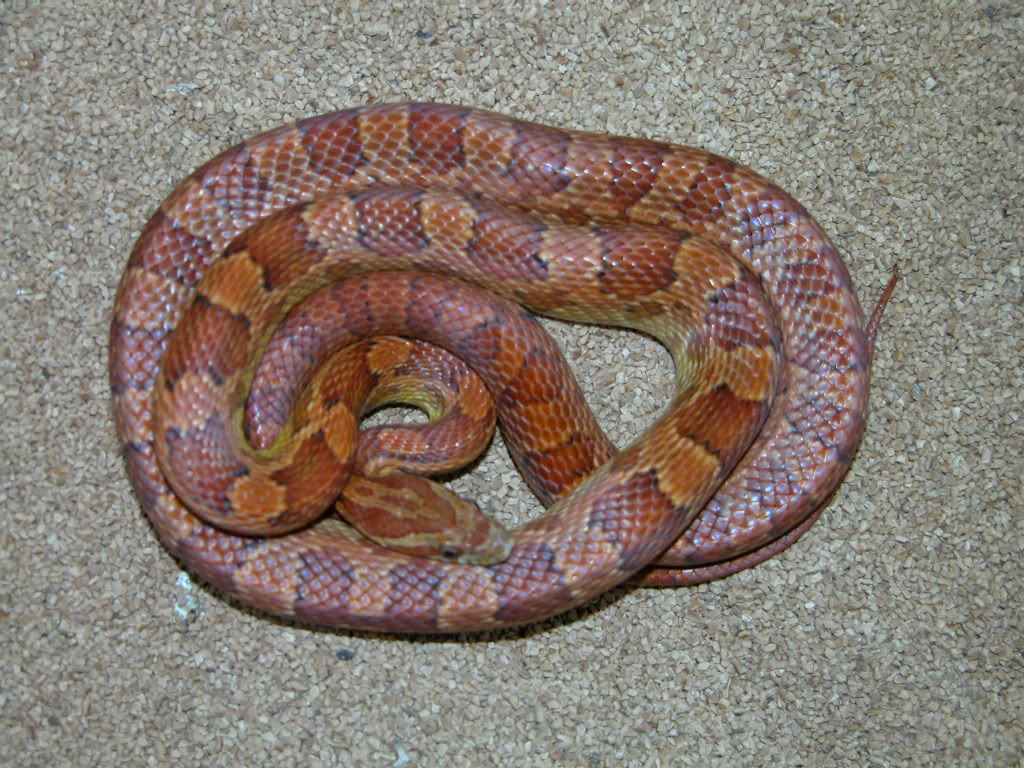I recently took my snake out of his cage to hold him for a bit but I noticed a light yellow on his belly. He has checker like scales with some black and some white (those colored scales were on him when I bought him). I don't know how he got this but I have a feeling he has ammonia on his scales from liquid. I couldn't find anything on the web that cures ammonia for snakes.

The image above shows yellow on the top of the corn snakes body. My corn snake has the same colored yellow but on his belly (bottom of his body). His tank size is about 34 inches long, 26 inches wide, and 41 inches tall. His everyday temps range from 74 degrees to 85 degrees. I don't use substrate for him because he may swallow some by accident so I use those flat tank mats. He eats small rats every Wednesday.

The image above is what his mat looks like except that his mat is green and fits the length and width on bottom floor of his tank. The heating pad is located to the far left end side of the tank. He will go over there if he feels like it. My day lamp sit on the top far right of the lid and my night lamp goes to the same spot. I switch between the two lamps and the heating pad normally don't get turned on that often unless needed. I don't turn on day lamp in daytime unless too cool in tank. I don't turn turn on night lamp until night time and the night lamp has concentrated heat that focuses on a particular area.